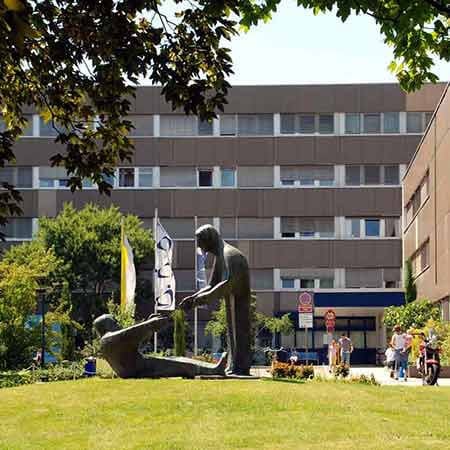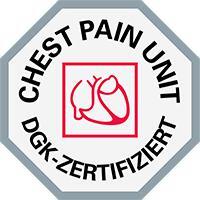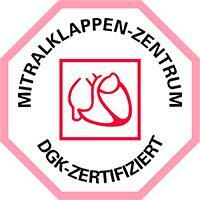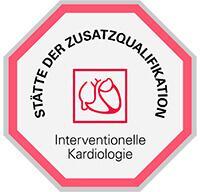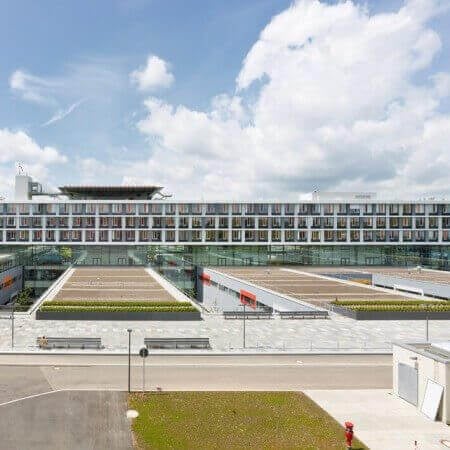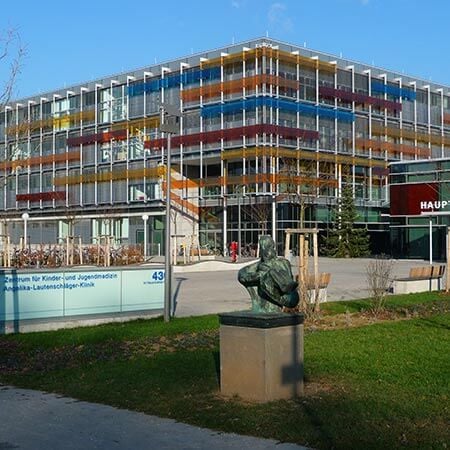In atrioventricular nodal reentrant tachycardia, the normal flow of electrical signals from the atria to the ventricles is disrupted. As a result, the electrical signals in the heart spin in a circle like a race car on a track.
Atrioventricular nodal reentrant tachycardia (AVNRT) is not usually life-threatening, but can significantly impair quality of life, considering that most patients with AVNRT do not have any cardiac comorbidities.
Content
- Overview
- What provokes the AVNRT development?
- The mechanism of development of AVNRT
- Symptoms of AVNRT
- Treatment of AVNRT
- Surgical treatment of AVNRT
- Treatment in European hospitals
- The cost of treatment in Europe
- Treatment in European hospitals with Booking Health
Overview
Supraventricular tachycardia is a common arrhythmia originating in the area above the ventricles of the heart. Its main features are a sharp increase in heart rate and the persistence of the atypical rhythm for some time. Nowadays, this heart disorder is very common in people over the age of 20.
There are five main types of supraventricular arrhythmias, different in etiology and pathophysiology, including atrioventricular nodal reentrant tachycardia.
The atrioventricular junction is a complex functional formation, which is characterized by a complex spatial geometrical, electrophysiological, and molecular structure. The complexity of the organization of this structure is determined by its functional purpose. However, there is no complete and unified definition of the atrioventricular junction, which would reflect all anatomical, histological, biochemical, and functional features of this formation. But we can review how and why the atrioventricular nodal reentrant tachycardia occurs.
What provokes the AVNRT development?
At the present stage of the AVNRT study, the information about what provokes the development of heart disease remains unclear. The findings of epidemiological studies suggest that the majority of patients with AVNRT usually have no signs of clinically significant structural cardiac pathology.
There was a clinical study conducted in the 2000s, in which transcatheter echocardiography (EchoCG) assessed central hemodynamic parameters in 75 patients with a typical form of atrioventricular nodal reentrant tachycardia. It was found that the main parameters of central hemodynamics in this group of patients before a surgical intervention did not differ significantly from those in healthy people. Nevertheless, the study revealed that in this arrhythmia the so-called "isolated abnormalities" of the connective tissue of the heart (such as mitral valve prolapse and false chords of the left ventricle) were noticed. For example, in another clinical study, it was demonstrated that isolated connective tissue abnormalities of the heart are associated with AVNRT in 40-60% of cases. However, the authors concluded that AVNRT should not be considered as a manifestation of connective tissue dysplasia.
The mechanism of development of AVNRT
The foundation of heart disease is based on the functional division of the atrioventricular junction into two channels with different electrophysiological properties: one being "fast" and another one "slow". These channels form two anterograde atrial entrances to the compact part of the atrioventricular junction in the area of Koch's triangle (an anatomical area located in the interatrial septum in the right atrium and bounded by the Todaro tendon, the upper edge of the coronary sinus, and the fibrous ring of the tricuspid valve).
The "fast" part of the atrioventricular junction located in the upper parts of Koch's triangle has the properties of "fast" conduction (during sinus rhythm, conduction occurs along with it) and relatively high values of refractoriness. At the same time, the fibers of the "slow" part are located in the lower parts of the triangle, passing from the upper edge of the coronary sinus, along the fibrous ring of the tricuspid valve to the compact part of the atrioventricular junction. These tissues are characterized by "slower" conduction and low refractory values.
Different electrophysiological properties of two groups of tissues in this area are a basis for the formation of the repeated entrance of excitation (reentry circuit) and the existence of tachycardia. In extraordinary atrial contraction (for example, atrial extrasystole) there is a block of conduction in the fast part and the impulse is slowly conducted to the ventricles in the lower parts of the Koch's triangle. During this time, excitability in the fast part has time to recover and the depolarization wave, already retrograde, spreads to the "fast" part, and then again to the "slow" part. Thus, reentry is formed in the Koch's triangle area, which is the basis of atrioventricular nodal reentrant tachycardia.
A patient with atrioventricular nodal reentrant tachycardia usually has no signs of structural myocardial pathology. The tachycardia occurs as episodes of frequent rhythmic palpitations, which start and stop suddenly. The duration of tachycardia paroxysms ranges from a few seconds to several hours, and their frequency ranges from daily arrhythmia attacks to one or two times a year.
The intensity of symptoms during an attack depends on heart rate (usually from 140 to 250 per minute), the functional capacity of the cardiovascular system, and the presence of concomitant pathology. During the paroxysm, patients usually complain of weakness, dizziness, the sensation of pulsation in the vessels of the neck, and in the head. The attack can sometimes be accompanied by the development of syncope, or hypotension.
Symptoms of AVNRT
Patients with AVNRT experience:
- Heart palpitations.
- Pronounced dizziness, presyncope, and fainting.
- Shortness of breath and chest pain.
- Significant decrease in blood pressure.
- Feelings of fear, panic, and anxiety attacks may often be present.
Atrioventricular nodal reentrant tachycardia attacks often last up to 1 hour (usually 5-20 minutes), and they may recur with varying frequency. Some patients can cope with another attack themselves by taking some over-the-counter medicines or by carrying out vagus tests (pressing on the eyeballs, rubbing cold water on the skin, etc.).
It is worth remembering that some supraventricular arrhythmias have absolutely identical symptomatology, but some of them can be life-threatening. That is why a full examination is necessary to determine the type of tachycardia and to decide whether treatment is necessary.
Clinically, a patient having an AVNRT attack may feel sudden palpitations, severe discomfort in the heart area, a feeling of tightness in the throat, and sometimes even shortness of breath. A negative feature of atrioventricular tachycardia is the absence of any signs of the existence of this arrhythmia on ECG (outside the attack). Therefore, at the slightest sensation of heart palpitations or attacks of sudden palpitations, especially in women after 18 years of age, it is recommended to see an arrhythmologist with a possible 24-hour ECG monitoring.
The patients suffering from AVNRT outside the attacks usually do not show signs of structural heart abnormalities or symptoms of any other heart disease. As was mentioned above, this arrhythmia can be associated with the so-called "isolated anomalies" of the connective tissue of the heart (mitral valve prolapse, false left ventricular chord). Nevertheless, it is impossible to call those who suffer from even rare paroxysms of atrioventricular tachycardia absolutely healthy. This is evidenced by the data obtained during medical studies, in which the parameters of quality of life in this category of patients were evaluated. It was found that during the "quiet" period, patients with AVNRT had significantly lower quality of life parameters compared to the control group (practically healthy individuals).
The lowest parameters were revealed on the scales of assessing the role of physical problems, social activity, and the role of emotional problems in life-limiting activities. The analysis of the mentioned parameters showed that despite low physical activity scores, most patients in the "quiet" period could perform a significant amount of physical activities without restrictions (long walks, physical exercises, swimming, sports and games, weight-bearing). Maximum physical activity was noted in 60% of patients with atrioventricular tachycardia. The remaining patients were able to perform daily work without restrictions. In none of the observed cases did the patients lose the ability to self-care. More than half (54%) of patients with atrioventricular tachycardia had no difficulty performing household chores or their professional duties.
Treatment of AVNRT
There are two methods of treatment of AVNRT: conservative and surgical.
The conservative method involves either termination of tachycardia attack or its prevention. To prevent it, antiarrhythmic drugs (drugs that prevent the development of rhythm disturbances (any rhythm that differs from the normal)) are prescribed. The choice of the drug is determined by the cardiologist based on the patient's condition, and the presence of concomitant diseases.
The attack can be effectively stopped by reflex techniques. Specific drugs can be administered both orally and parenterally.
Prolonged prophylactic administration of medication may be prescribed for continuous therapy for the management of patients with recurrent tachycardia attacks. The drugs of choice are quinidine, disopyramide, and beta-blockers. In the case of rare, hemodynamically insignificant episodes of arrhythmia, therapy on demand may be used.
Surgical treatment of AVNRT
As for the surgical treatment, radiofrequency catheter ablation is currently the most effective intervention for AVNRT managing, which allows the patients to completely stop taking antiarrhythmic drugs.
Radiofrequency ablation is a minimally invasive method of surgical treatment for arrhythmias using radiofrequency (electrical) energy. The area of the heart associated with the arrhythmia (which causes or maintains the arrhythmia) is exposed using an electrode. The area to be treated with radiofrequency is determined by an intracardiac electrophysiological examination, which is carried out simultaneously (in one session) with the ablation. For this purpose, endocardial electrophysiological mapping is performed, including using the system of electroanatomic 3D navigation and intracardiac echocardiography in complex heart rhythm disorders (atrial fibrillation, atrial extrasystole, and tachycardia, or ventricular arrhythmias).
Currently, radiofrequency ablation is actively used for a wide range of arrhythmias, and in some cases, like in cases of supraventricular tachycardias, is the method of choice and first-line treatment.
The effectiveness of radiofrequency ablation for patients with AVNRT is 98-99%. The complications in the form of development of high degree AV block during modification of the slow part by RFA method occur in 1% (according to data of the leading electrophysiological laboratories of the world). The destruction of tissues of the "slow" part in the lower part of Koch's triangle is the basis of the procedure.
There are some cases where ablation has to be repeated. And in such cases, the efficiency of the procedure after the first session is 97%, and after the second session it is 100%, with no complications related to surgical treatment.
The criteria of effective radiofrequency ablation exposure are the appearance of accelerated rhythm from atrioventricular junction during the application, elimination of "jump" phenomenon during programmed atrial stimulation, absence of AVNRT during stimulation in its induction modes.
Radiofrequency ablation is usually indicated to all patients suffering from this arrhythmia. A contraindication to ablation may be the preference of the patient himself to constantly undergo antiarrhythmic therapy.
However, general indications for surgical treatment are:
- Frequent attacks of tachycardia and their poor tolerance.
- Persistence of tachycardia attacks while taking antiarrhythmic drugs.
- Occupation associated with life-threatening loss of consciousness.
- Situations where long-term drug therapy is undesirable (young age, or planned pregnancy).
Treatment in European hospitals
When it comes to the need for the treatment of atrioventricular nodal reentrant tachycardia in European hospitals, patients choose those that have proven themselves in the successful treatment of cardiac pathologies. European hospitals meet high international standards for the quality of treatment and medical services provided. They employ cardiologists whose names are known far beyond Europe, whose competence and experience have saved thousands of human lives.
Thanks to the most advanced therapy methods applied in Europe, most patients with AVNRT are successfully treated. Positive reviews about the treatment of tachycardia in Europe show that doctors eliminate not only the pathology itself but also the pathology that caused it. For this purpose, an ultra-precise examination is carried out in European hospitals, the results of which can be 100% trusted. Conservative therapy is based on the prescription of new-generation drugs, and if there is a need for surgical intervention, minimally invasive techniques are used.
You can start treatment of atrioventricular nodal reentrant tachycardia the quickest in the following European hospitals:
- St. Vincentius Hospital Karlsruhe-Academic Hospital of the University of Freiburg, Germany.
- HELIOS University Hospital Wuppertal, Germany.
- Preventicum Diagnostic Clinic Essen, Germany.
- Assuta Hospital Tel Aviv, Israel.
- PAN Clinic Cologne, Germany.
Visit the Booking Health website to learn more about the listed European hospitals for AVNRT treatment.
The cost of treatment in Europe
Cardiology and cardiac surgery in Europe provide a variety of therapeutic techniques and surgeries by type, level of complexity, etc., which effectively help to eliminate the problem and save a person's life.
Prices for procedures in cardiac surgery in Europe are not very high, which is why treatment in European hospitals is so popular. The cost of treatment will vary greatly depending on the treatment method, equipment and medications used, doctor, clinic, and many other factors. However, on average, the cost of treatment with RFA will start at 6,000 EUR. It should be taken into consideration that the programs presented on the Booking Health website include the prices for diagnostics and other medical services, but later in the treatment, if any additional medical procedures are required, their prices will be also added to the preliminary cost of treatment.
The main goal is the patient's speedy recovery and restoration of his ability to live a full life. The treatment conditions are created in such a way that the patient feels completely comfortable, which has a good effect on the treatment process.
You can send a request to Booking Health to get information on the cost of treatment in your specific case.
Treatment in European hospitals with Booking Health
Organizing treatment in Europe through Booking Health offers patients the following advantages:
- The services of the best interpreters.
- Transfers to the place(s) of treatment.
- The final cost of treatment is rarely higher than the preliminary cost (additional invoicing at the end of the treatment is done only in exceptional cases).
- Each patient is provided with a supervisor with medical education.
- No need to choose between the best hospitals in Europe, because all the hospitals presented by Booking Health are the best in their specialization.
If you would like to start your atrioventricular nodal reentrant tachycardia treatment in Europe, please leave your request on the Booking Health website.
Authors:
This article was edited by medical experts, board-certified doctors Dr. Nadezhda Ivanisova, and Dr. Bohdan Mykhalniuk. For the treatment of the conditions referred to in the article, you must consult a doctor; the information in the article is not intended for self-medication!
Our editorial policy, which details our commitment to accuracy and transparency, is available here. Click this link to review our policies.
